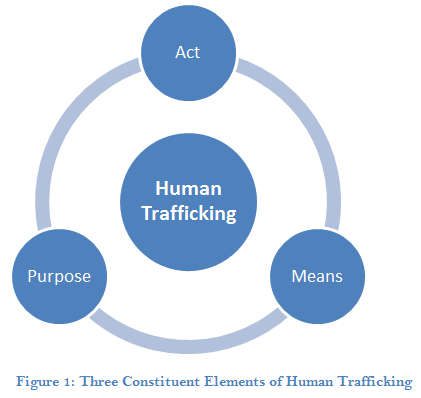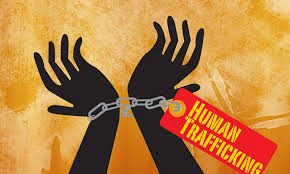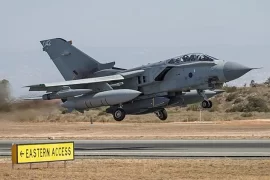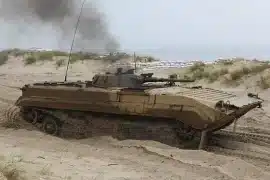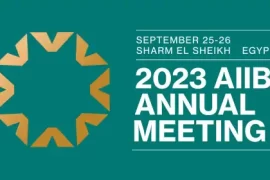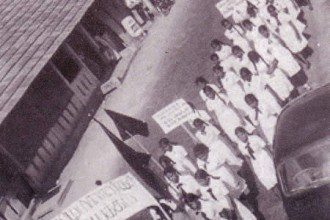Bangladesh is one of the source countries as well as transit points for human trafficking. Every year thousands of people are trafficked out. In a study, it has been found that among the trafficking victims, the women and the children are in the most vulnerable position. From Bangladesh, around four hundred women and children are trafficked out every month (Sultana 2015). All these victims are abducted either for forced labor or for sexual exploitations.
This article aims to discuss the present phenomena of human trafficking in Bangladesh. In the opening part of the article, the conceptual framework and the global perspective of human trafficking have been looked into. In the later part, the Bangladesh scenario and the gender and sex perspective of trafficking are explained with recent data and information.
The definition of the term “trafficking” is still ambiguous. No agreed upon definition on trafficking, from the international actors, has been found yet. Different actors have defined the term “trafficking” from different perspectives. All those definitions cover the ideas ranging from the facilitated as well as voluntary migration to forced labor, coercion, exploitation of prostitution, violence and movement of people from one place to another place influenced by threat and force for specific exploitative means (Ruhi 2003).In comparison to present perspective the classical interpretations of the term “trafficking” are outmoded, vague and non-responsive (United Nations Economic and Social Council 2000).
The new perceptions of trafficking are extracted from the evaluation or the assessment of the present requirements of persons – men, women and children – who are trafficked. Therefore, the current definition should be well-defined to protect as well as promote the human rights of the trafficked victims (Ruhi 2003).
The concept of trafficking is quite vigorous; the parameter of the term “trafficking” is continually developing in response to the development or change of political, economic and social conditions. The manner and the way of trafficking changes from time to time, place to place and environment to environment but the basic elements of trafficking remain constant. So the core of the definitions of trafficking should be the recognition that it is not unified. It is different from illegal forms of migration. All illegal form of migration is not trafficking, but any kind of trafficking is illegal.
Human Trafficking: Global Perspective
Human trafficking along with arms business is the second largest criminal industry in the world and the annual income for this is huge. Statistics shows that globally, for labor and sex, a $150 billion annual market is earned by selling men, women and children.
In a study, it has been found that a total of 31,766 victims were detected since 2010 to 2012. This information is collected from the trafficking victims of 80 countries of the various region of the World. The age, as well as the gender of the victims, was reported at that study also. This study further shows that the share of the males is increasing in comparing with the years 2006 and 2009. Child trafficking, where the victims are under 18 years of old, is accounted more than 30% of the total victims during the two-year time period, 2010 and 2012 (UNODC 2014). (See the figure below)
Around 120,000 children and women who are trafficked from the other parts of the world into the European Union Countries every year has a made a significant number and showed the real picture of human trafficking (Osborn 2001). The information shared by the US Department of State is more terrible. According to the US Department of State, an estimation ranging, annually, 700,000 to 4,000,000 children and women are trafficked worldwide (U.S. Department of State 2002)
In the South Asian region, while the share of child trafficking is very high in Bangladesh, in Nepal, women remain in the top holding a significant percentage of shares of the trafficking victims.
Human Trafficking: Bangladesh Scenario
In Bangladesh, human trafficking is one of the most money-making forms of illegitimate enterprise. The high profit, as well as the low penalty nature of human trafficking business, has made it more attractive to traffickers (criminal gangs) and as well as very large-scale organized crime in Bangladesh (Chowdhury 2003).
Mohammad Jamil Khan, in one of his study, says that Bangladeshi migrants who are looking for jobs in the UAE lost their hope coming to the Strait of Hormuz. A human trafficking gang basing in Iran attract Bangladeshi people with assurance that they will give them good jobs in Europe. They are kept captive when they are taken out of the UAE and moved 39 kilometers away from the mainland and tortured there. Unless the family of the captive sends money to them, they are tortured and even killed also (Khan 2015).
It is very difficult to discover the exact data, because of the unwillingness of the family member of the victims to share the exact information. From several studies, it has been found that within, last thirty years over 1 million children and women were smuggled out of the country. The current UNICEF report reveals that around 400 children and women are trafficked in each month. Another report reveals that approximately 3 lac Women and children who belong to the age between 12 to 30 years of old were smuggled to India alone from Bangladesh in the last decade. Some of the Non-government organizations have compiled this estimation which has increased the number to 500,000. The Pakistan-based Lawyers for Human Rights and Legal Aid in one of its report published that around 200,000 women and girls who are the nationals of Bangladesh were traded in Pakistan. Some other survey says that the number of women and girls of Bangladesh in Pakistan is undocumented and it will go over 250,000.
Bangladesh is a significant trafficking hub that links South Asia to Gulf region. The principal route what the traffickers follow starts from Dhaka to Mumbai of India, Karachi of Pakistan and then Dubai. Human traffickers use 20 transit points located in 16 districts to smuggle people from Bangladesh to India (Corraya 2015). Some other newly transit points have been discovered very recently to smuggle people from Bangladesh to South –East Asian countries using water routes.
According to the UNHCR report within last 18 months, till to date a total number of people 1.5 lac has been trafficked by boats and ships through The Bay of Bengal. Within the first 3 months of 2015, approximately 25000 people, from the other parts of the country, have been trafficked using Teknaf, Ukhia, Cox’s Bazar Sadar and Maheshkhali points. Recently, on June 2015, Bangladesh Coast Guard team has rescued 116 people from Bay of Bengal among whom 2/3 are 16 to 25 years of old.
In a TV program named Crime Watch, one of the most popular channels of Bangladesh reports that a few officers of law enforcement agencies like Bangladesh police and Border Guard Bangladesh (BGB) have worked as the supporting hands of brokers of human trafficking. To talk about the background of the human trafficking using water route, the program further refers that human trafficking from Bangladesh to Thailand by boat has started from 2003. In 2009, a huge number of people involved themselves as the broker in this illegal work and the business boomed. In 2012, human trafficking took a horrible scene with increasing number of points for trafficking people using water routes of the country from the Cox’s Bazar, Teknaf, Maheshkhali and Ukhia area (ntv Bangladesh 2015). Given that, all these information have been revealed after the discovery of mass graves in Thailand.
On July 7, 2015, a total of 74 women have been handed over to BGB and Immigration police officer of Bangladesh. While getting them back, a Human Rights Organization “Rights” and Bangladesh Women Lawyer association were present there. The overall study and documented statistics denote the magnitudes of the problems of the present scenario of human trafficking in Bangladesh.
Human Trafficking in Bangladesh: Understanding Sex and Gender
Globally, one among the five human trafficking victims is children. But in some other areas like Africa or in the Greater Mekong, children form the majority of the persons who are trafficked. They are exploited for child pornography and sex and for forced begging.
Women make the significant share of the total trafficking victims. Two-thirds of the world’s victims of human trafficking are women and they are formed with young women aged from 11 to 25. Most of the cases these women are attracted with the false promise of high salaried employment. Finally they are raped, drugged and then imprisoned and beaten with violence and their passports are confiscated and in the last moment blackmailed (UNODC 2015).
But in comparison to the percentage of women the percentage of male victims is lower. The purposes of trafficking men and boys are making them forced labor, forced begging and child soldiers. To some extent, they are trafficked for sexual exploitation.
The linkage between trafficking and gender is one of the feminist arguments over prostitution, sex and trafficking and the connection among these three. Most of the feminists find a strong connection between sex or prostitution and trafficking and they think that without overthrowing prostitution, trafficking cannot be addressed (Global Alliance Against Traffick in Women 2010). So globally, almost all the discussions around human trafficking focus on the woman and their sex work. Although there are many things to think for out of this idea, but no one talks about that.
Human trafficking is a profitable illegal business all over the world. It is not only a national problem but also a global problem. This problem is spreading at an alarming rate. The recent discovery of mass graves in Thailand has opened up the eyes of the international organizations of the world although the effort from Bangladesh government is limited.
The main reasons behind the increase rate of human trafficking in Bangladesh are poverty, gender discrimination, social exclusion, lack of awareness, illiteracy, and poor governance system. All these elements are directly or indirectly promoting traffickers to get a significant space to open up the illegal enterprise so rapidly.
Bangladesh sends a significant number of labors outside every year. But most of the recruitments are done by agencies which lack proper accountability. This is another reason, the trafficking business in the country is boosting up.
Bangladesh doesn’t have the minimum standards for eliminating human trafficking, but it has taken many significant efforts to make it so (U.S.State Department 2009). Bangladesh has addressed sex trafficking, but it is far away from addressing the offenders of labor trafficking. For counter trafficking, the government of the country has enacted The Human Trafficking Deterrence and Suppression Act 2012. It has formed various committees and sub-committees as well for counter trafficking. Currently, Ministry of Home Affairs has undertaken an initiative to address the gaps of the existing legal framework. But that is not enough to prevent human trafficking. The massive participation of the local people and the honest effort of the government can end up this heinous crime from the country. The concerted effort of the government with international agencies and NGOs is also necessary in this respect to combating the problems.
Bibliography
1. bdnews24.com. June 22, 2015. http://bdnews24.com/bangladesh/2015/06/22/bangladesh-government-is-silently-endorsing-human-trafficking-says-a-research-group (accessed July 3, 2015).
2. Chowdhury, Jamila Ahmed. SOS-arsenic.net. August 29, 2003. http://www.sos-arsenic.net/english/intro/child-traff.html (accessed July 3, 2015).
3. Corraya, Sumon. AsiaNews.it. February 26, 2015. http://www.asianews.it/news-en/Prostitution-and-forced-labour:-trafficking-in-human-beings-in-Bangladesh-33572.html (accessed July 3, 2015).
4. Global Alliance Against Traffick in Women. Beyond Borders: Exploring Linnks between Trafficking and Gender. Working Papers, Bankok: Global Alliance Against Traffick in Women (GAATW), 2010.
5. Khan, Mohammad Jamil. Dhaka Tribune. April 4, 2015. http://www.dhakatribune.com/2015/apr/04/iranian-islands-torture-ground-duped-migrants (accessed July 3, 2015).
6. ntv Bangladesh. “Full Scenario of Human Trafficking in Bangladesh.” ntv online. May 28, 2015. http://en.ntvbd.com/video/others/crime-watch/full-scenario-of-human-trafficking-in-bangladesh/1432809204.ntv (accessed July 3, 2015).
7. Osborn, Andy. “Sex Traffick is Europe’s Shame.” Sex Trafficking in Europe. Manchester: The Gurdian, March 9, 2001.
8. Ruhi, Ruh Afza. “Human Trafficking in Bangladesh: An Overview.” Asian Affairs, 2003: 45-56.
9. Sultana, Nargis. Scenario of Human Trafficking in Bangladesh. Dhaka, June 6, 2015.
10. U.S. Department of State. Victims of Trafficking and Violence Protection Act 2000. Trafficking in Person Report, Washington D.C.: U.S. Department of State, 2002.
11. U.S.State Department. Bangladesh (TIER 2 Watch List) [Extracted from U.S. State Dept Trafficking in Persons Report, June 2009]. June 2009. http://gvnet.com/humantrafficking/Bangladesh-2.htm (accessed July 4, 2015).
12. UNIFEM. Trafficking in Persons: A Gender and Rights Perspectives. Briefing Kit, Bangkok: UNIFEM, 2009.
13. United Nations Economic and Social Council. Integration of the Human Rights of Women and the Gender Perspective. Annual, New York: UNECOSOC, 2000.
14. UNODC. Global Report on Trafficking in Persons 2014. Annual Report, New York: United Nations, 2014.
15. “Human Trafficking.” United Nations Office on Drugs and Crime. 2015. http://www.unodc.org/unodc/en/human-trafficking/what-is-human-trafficking.html (accessed July 2, 2015).
16. Transitional Organized Crime: Let’s put them out of business. 2015. http://www.unodc.org/toc/en/crimes/human-trafficking.html (accessed July 4, 2015).
The writer is the Research Fellow at Teach for Bangladesh.

